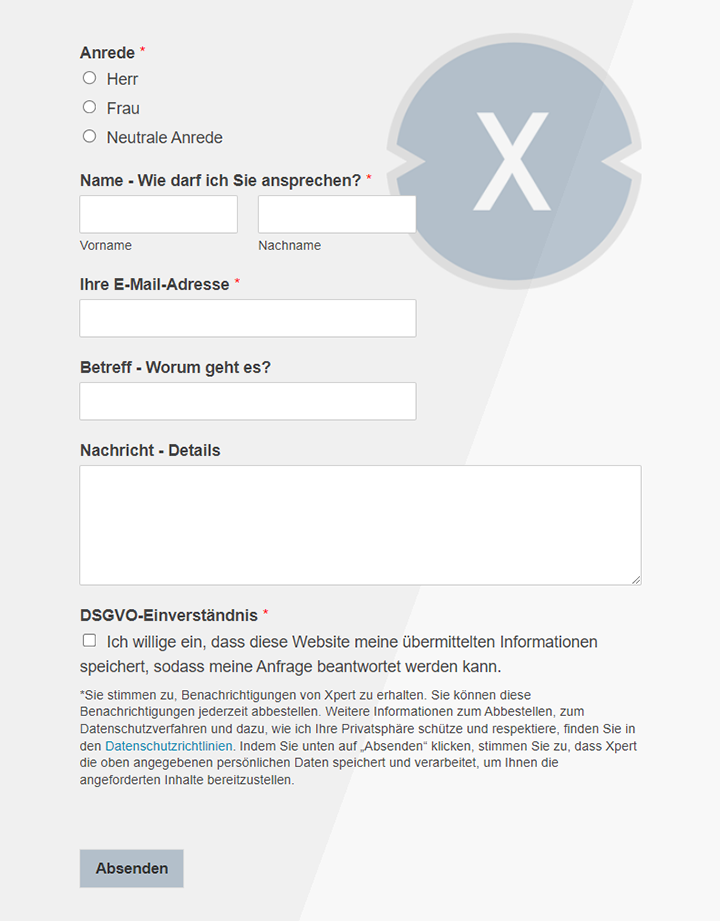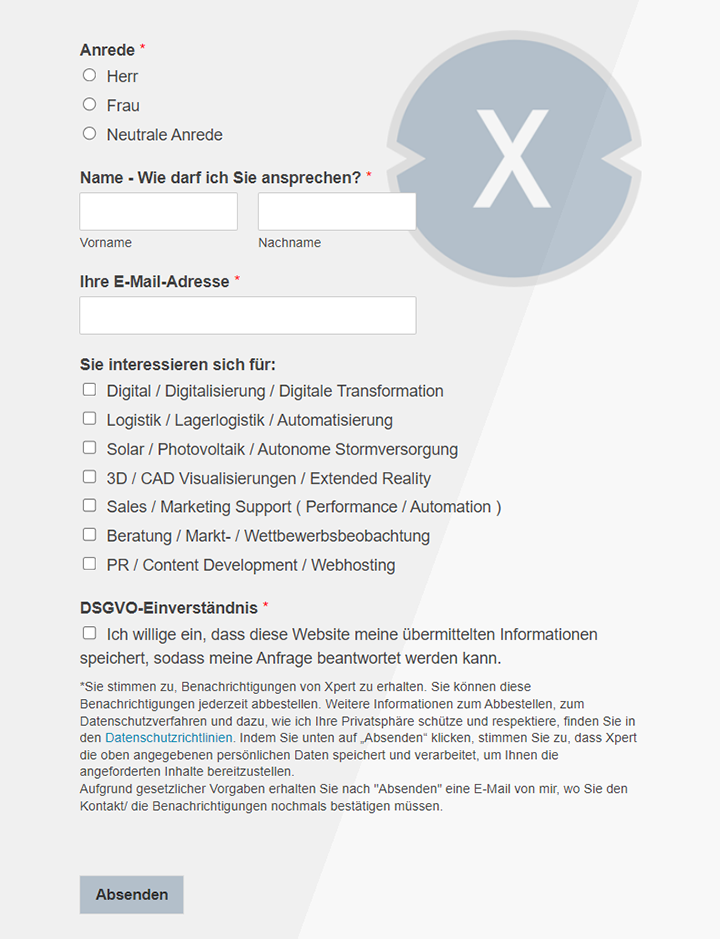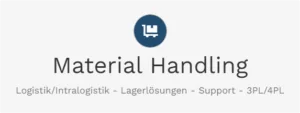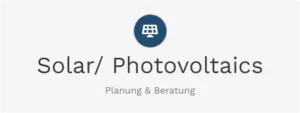Meta does it like X: 'Community Notes' replace the 'fact check' - but there is a catch
Xpert pre-release
Language selection 📢
Published on: January 20, 2025 / update from: January 23, 2025 - Author: Konrad Wolfenstein

Meta does it like X: 'Community Notes' replace the 'fact check' - but there is a catch - picture: xpert.digital
New Moderation System at Meta – “Community Notes” vs. Misinformation: Why Meta Skips Paid Ads
Meta Introduces Community Notes – A New Era of Restricted Content Moderation
Meta, the parent company of Facebook, Instagram and Threads, plans to launch a new content moderation system called Community Notes. This feature, which is strongly reminiscent of the model already implemented on Elon Musk's Platform X (formerly Twitter), is intended to involve users more in content moderation and combat the spread of misinformation. But there is a crucial catch: the “Community Notes” will only apply to organic content – paid ads are excluded.
The most important innovations and restrictions
- Scope: The “Community Notes” only apply to organic contributions, i.e. content for the distribution of which Meta does not use advertising budgets. Paid ads are explicitly excluded from the function.
- Timing: The rollout will be gradual, starting in the US. The full implementation will be spread over several months and is expected to be further optimized throughout 2025.
- Platforms: The three major meta platforms are affected: Facebook, Instagram and Threads.
This model marks a turning point in how Meta approaches content moderation. While the focus so far has been on a central fact-checking program, Meta's “Community Notes” aims to transfer responsibility for the accuracy of information to the community.
How do the “Community Notes” work?
The “Community Notes” system is based on the active participation of users and promotes decentralized moderation. The goal is to debunk or supplement misinformation through annotations and additional context.
Basic principle
- Users can add short comments to posts that they find misleading or need context.
- These comments are rated by other community members and only published if they are deemed “helpful.”
participation
- Any user who meets certain criteria (e.g. a minimum account age and no rule violations) can register as a contributor.
- Comments must be precise and well documented. They may be a maximum of 280 characters long and should be based on reliable sources.
Evaluation and publication
- Other contributors review the comments and rate them as “helpful” or “unhelpful.”
- A special algorithm ensures that only comments supported by users with different perspectives are published.
- This is intended to achieve the broadest possible consensus.
Why does Meta rely on “Community Notes”?
Meta has several goals with this initiative:
- Promoting free expression: Returning to the “roots of free expression” is the focus. Instead of conducting centralized fact-checking, Meta wants to distribute responsibility among users.
- Combating misinformation: By giving users the opportunity to flag and comment on misleading posts, misinformation should be identified more effectively and quickly.
- Increasing transparency: By involving the community, the moderation process is made more transparent. The anonymity of the contributors is also intended to minimize possible bias.
- Alternative to previous programs: Meta is replacing its central fact-checking program in the USA with “Community Notes”. This represents a significant shift in strategic direction.
Criticism and challenges
Although the introduction of “Community Notes” is considered an innovative step, there are also criticisms and potential problems:
Limitations on application
- Paid advertisements, which often have a large influence on public opinion, are excluded from the function. Critics see this as a vulnerability because misinformation in ads could remain unfiltered.
- It remains unclear how organic posts from brands, influencers or political actors should be treated.
Risk of manipulation
- Since moderation depends on the community, there is a risk that well-organized groups will exploit the system to specifically influence content.
Quality and objectivity
- Not all users have the necessary media literacy to objectively evaluate information.
- There is a risk that personal biases influence contributors' decisions.
Complexity of consensus building
- The algorithmic approach to consensus building could result in important comments not being published if they do not receive sufficient support.
Advantages of “Community Notes” over classic fact checks
Despite the challenges, the new system offers some notable benefits:
1. Decentralization and diversity
- Involving numerous users ensures a greater variety of perspectives.
- This reduces the risk of bias that can occur with centralized fact-checking organizations.
2. Faster response times
- Community Notes can be created in real time, allowing for faster response to new trends or viral misinformation.
3. Promoting media literacy
- Users are encouraged to actively research and critically question sources themselves.
4. Transparency and trust
- Since the process is publicly viewable, community notes could increase user trust in the platform.
5. Collaborative assessment
- The consensus principle ensures that comments from users with different perspectives are evaluated and accepted.
The launch of Community Notes marks a fundamental shift in Meta's content moderation strategy. While the model shows potential to combat misinformation more effectively and engage users more, its long-term effectiveness remains uncertain.
Potential further developments
- Expansion of the function to international markets
- Integration of AI-powered tools to support the community with moderation
- Improvements to the consensus building algorithm
Implications for the advertising industry
The decision to exclude paid ads from Community Notes could have far-reaching consequences for the advertising industry. Brands and advertisers may need to adapt their strategies to meet the growing need for transparency and credibility.
With “Community Notes” Meta is taking a step into a new era of content moderation. Whether this approach will have the desired effect depends on how effectively the community is involved and whether Meta succeeds in addressing the system's weaknesses. The experiment could not only transform Meta's platforms, but also redefine how social media deals with misinformation overall.
Our recommendation: 🌍 Limitless reach 🔗 Networked 🌐 Multilingual 💪 Strong sales: 💡 Authentic with strategy 🚀 Innovation meets 🧠 Intuition
At a time when a company's digital presence determines its success, the challenge is how to make this presence authentic, individual and far-reaching. Xpert.Digital offers an innovative solution that positions itself as an intersection between an industry hub, a blog and a brand ambassador. It combines the advantages of communication and sales channels in a single platform and enables publication in 18 different languages. The cooperation with partner portals and the possibility of publishing articles on Google News and a press distribution list with around 8,000 journalists and readers maximize the reach and visibility of the content. This represents an essential factor in external sales & marketing (SMarketing).
More about it here:
Meta goes the way of X: 'Community Notes' replace 'fact check' - A paradigm shift with imponderables - background analysis
Competition for X? Meta relies on user-based moderation - with one crucial difference
Meta, the parent company of Facebook, Instagram and threads, introduces the new system of “community notes” in a remarkable strategic realignment that inevitably compares with the platform X (formerly Twitter) under Elon Musk. In the future, this user-based moderation instrument will take the place of the previous, often criticized fact check programs. However, a significant difference to the model of X is that Metas “Community Notes” will initially not apply to paid advertisements. This function, which aims to provide organic content with additional context information or corrections, is limited to contributions, for which META has not received any direct financial resources. Organic content thus includes all those posts, images, videos and text articles that create and share users and pages without being paid by meta.
The cornerstones of the new system
The introduction of the “Community Notes” marks a significant step in Metas handling the moderation of content and combating misinformation. The most important aspects of this innovation can be summarized as follows:
Scope
A central point is the limitation of the “Community Notes” to organic content. Paid advertising initially remains unaffected by this system. This decision raises questions about the responsibility for the correctness of advertising messages and could lead to a division of the information landscape within the meta platforms.
Defining organic content
Organic content includes all posts that do not achieve greater reach through paid placements. This includes everyday user posts, contributions from friends and family, but also communication from brands and influencers, unless this is explicitly advertised. The gray area between organic and paid content, especially in the area of influencer marketing, remains a point of discussion.
Time frame for the introduction
Meta plans a gradual introduction of the “Community Notes”. The United States starts where the function is to be rolled out in the coming months. It can be assumed that Meta will use the experience in the USA to optimize the system before it is made available in other regions and countries.
Affected platforms
The “Community Notes” are rolled out across the entire ecosystem from Meta, i.e. on Facebook, Instagram and the text -based platform threads. This comprehensive implementation underlines the meaning that Meta supports this new approach.
Implications and open questions
The introduction of the “Community Notes” harbors a number of implications and at the same time raises important questions, the answer of which will significantly influence the future use and acceptance of the system:
Treatment of brand communication
One of the central ambiguities concerns the treatment of organic contributions by brands and influencers. Are these contributions treated as much as those of private individuals? Which criteria are used to decide whether a note is appropriate? The answer to these questions is crucial for the advertising and marketing strategies of companies on the META platforms. It remains to be seen whether brands will actively try to avoid “community notes” to your contributions, or whether you could even use this system strategically to underpin your messages.
Impact on the advertising industry
The decision of Meta to apply “Community Notes” not to apply to paid advertising causes lively discussions within the advertising industry. Advertisers now have to ask themselves how they should deal with the possible discrepancy between the potential labeling of organic contributions and the lack of possibility for paid advertisements. This could lead to a shift in advertising budgets or new strategies to increase the credibility of advertising messages.
Dealing with political content
The introduction of the “Community Notes” is part of a more comprehensive restructuring of META's dealings with political content. In the past, the company has repeatedly struggled with criticism of its role in spreading political misinformation. The relocation of the responsibility of moderation to the community could be interpreted as an attempt to invalidate this criticism and at the same time emphasize freedom of expression. However, this approach also carries the risk that political camps could try to exploit the system for its own purposes.
Meta itself emphasizes that the details of the program are still in development and are reserved for changes. This statement underlines the experimental character of the new system and leaves space for adjustments based on the experiences of the users and the challenges that will arise over time. The introduction of the “Community Notes” is also interpreted internally as a return to the “roots of free expression” within the company, which, however, is seen by critics as an excuse for reducing one's own responsibility in content moderation.
The functionality of “Community Notes” in detail
The core principle of the “Community Notes” is to use the collective intelligence of the user base to contextualize or correct contributions. In the following, the functioning of the system is explained in more detail:
User Contributions
If a user sees a post that they believe is misleading, incorrect, or needs context, they can add a comment. This note should be concise and ideally point to trustworthy sources to support the claim.
Community evaluation process
The comments created are not immediately visible, but go through a valuation process. Other users who have registered as “Community Notes” with the actor can evaluate these comments. You can specify whether you find the note or not.
Consensus finding is key
An intelligent algorithm analyzes the ratings of different users. Particular weight is given to reviews from users who have represented different perspectives in the past and yet agree in their reviews. This principle of consensus building is intended to ensure that only comments that are widely accepted within the community and are not dominated by individual interest groups are published.
Visibility of annotations
Only comments that receive a sufficient number of upvotes and show consensus across diverse perspectives will be visible under the original post. This is to ensure the quality and relevance of the information displayed.
Goals and the replacement of the fact-checking program
With the introduction of the “Community Notes”, Meta pursues several strategic goals. A central concern is to reduce the spread of misinformation on the platforms. By giving users the opportunity to contextualize or correct contributions, a faster and more direct reaction to false reports should be made possible. This procedure is also interpreted internally as a return to the "roots of free expression" within the company.
At the same time, the introduction of the “Community Notes” means the end of the previous fact examination program in the United States. In the past, Meta had worked with external fact check organizations to check controversial content. However, this program was repeatedly subjected to criticism, both by users who saw themselves restricted in their freedom of expression, as well as from factual checkers themselves who found cooperation with Meta difficult. The “Community Notes” thus represent an internal solution that is potentially cheaper and relocates responsibility for the quality of information more to the user community.
Challenges and criticism of the new system
Despite the promising approaches, the system of the “Community Notes” also harbors a number of challenges and criticisms:
Shifting responsibility
Greater involvement of the community in content moderation also means shifting responsibility for the quality and accuracy of information to users. It remains to be seen whether the community can fully meet this responsibility. There is a risk that users may not have the necessary skills to correctly classify complex issues.
Loss of control over brand messages
For companies and brands, the introduction of the “Community Notes” means a potential loss of control via their organic messages. There is a risk that critical comments under their contributions could negatively affect brand perception. The question is how brands will deal with this new form of public discussion.
Potential susceptibility to errors and manipulation
A system that relies on the participation of a large number of users is potentially vulnerable to manipulation. Organized groups may attempt to influence the evaluation process to promote certain narratives or suppress unfavorable opinions. It is crucial that Meta implements mechanisms to detect and stop such attempts.
Fears of increased spread of misinformation
Critics fear that eliminating the established fact-checking program while introducing an untested community-based system could actually encourage the spread of misinformation, especially in the early stages of implementation.
The parallel to X (formerly Twitter)
The comparison to the “Community Notes” system already implemented on X is obvious (also known under the name “Community Notes”). X also relies on the collective intelligence of its users to provide contributions with context information. However, there are also differences. On X, for example, paid advertisements are also provided with “Community Notes”. The introduction to Meta still marks a significant change in the strategy for content management and will probably significantly influence the interaction of the users with information on these platforms. It remains to be seen whether Meta can learn from the experience of X and avoid its weaknesses.
Detail excursion: The functionality of “Community Notes” in detail
In order to understand the functionality of “Community Notes”, a closer look at the individual steps of the process is essential:
The basic principle of participatory moderation
In essence, “Community Notes” is based on the idea of participatory moderation. Instead of deciding on the correctness of information as a central authority, this task is placed in the hands of the user community.
Participation and writing comments
Not every user can automatically write “Community Notes”. Meta has determined certain criteria that have to perform potential participants. This includes, for example, a minimum age of the account and the lack of recent violations of the community standards. Users who meet these criteria can write comments on contributions that they classify as misleading or incorrect or need the additional context. These notes are limited in length (similar to short message services) and should ideally be documented with credible sources in order to underpin their meaningfulness. It is important to emphasize that these sources are not visible directly in the article, but serve as a basis for argument for the assessment by other users.
The multi-layered evaluation process
After a note has been written, it goes through a complex evaluation process. Other “Community Notes” players have the option of evaluating this note. You can state whether you feel the note as “helpful” or “not helpful”. However, this evaluation process is not purely quantitative. An algorithm analyzes the reviews and takes into account a variety of factors.
The role of consensus building
A central element of the evaluation process is consensus building. Comments that are rated as helpful by users with different perspectives and opinions are significantly more likely to be published. So the system tries to find a consensus about the accuracy or necessary context of a contribution that will hold up across partisan or ideological divides. This approach is intended to ensure that the annotations displayed are widely accepted and are not the result of manipulation by individual interest groups.
Publication and visibility for users
If a note has received a sufficient number of positive ratings and there is a broad consensus that it is helpful, it will be published under the original contribution and is visible to all users. It is also interesting that users who have interacted in the past with a contribution that was later provided with a “community note” may be notified. This is intended to ensure that the correction or the additional context also reaches those who have already seen the original contribution.
Anonymity and transparency in the system
In order to reduce potential bias and to promote free expression within the evaluation process, the “Community Notes” are published anonymously. The identity of the author of the note is not apparent to the other users. At the same time, META value transparency in the system itself. The basic principles of the evaluation process and the criteria for participation as participants are publicly visible.
Continuous improvement and gamification elements
The “Community Notes” system is not static, but is continuously developed and improved. Meta analyzes the feedback from the user and adapts the algorithms and processes accordingly. There are also gamification elements to promote active participation and quality of the contributions. Users who regularly write helpful comments can collect points and achieve the status of a “top writer”, which may give you additional rights or options within the system.
The advantages and disadvantages of “Community Notes” compared to classic fact checks
The shift of traditional fact checks to a community-based system such as “Community Notes” brings specific advantages and disadvantages:
Advantages of decentralization and diversity
A major advantage of the “Community Notes” lies in its decentralization. In contrast to centralized fact-checking organizations, which may be subject to certain bias, “Community Notes” are created and evaluated by a variety of users with different backgrounds and perspectives. This can lead to a greater variety of perspectives and greater acceptance of the results, since the comments are perceived as more balanced and less dominated by a single authority.
Scalability and responsiveness
Another advantage is the potential scalability and reaction speed of the system. By integrating a large number of users, “Community Notes” can potentially check a much larger amount of content and react faster to new trends and emerging misinformation than would be possible with a limited team of fact checkers. Real -time to draw attention to misleading information is a crucial factor in the fight against the spread of false reports.
Promoting media literacy among users
“Community Notes” can also have a positive impact on the media literacy of the users. By actively involved in the process of information checking, users are stimulated to research themselves, to critically evaluate sources and to develop a deeper understanding of the complexity of information.
Independence and transparency
Ideally, “Community Notes” are more independent of state or entrepreneurial interests as professional factual checks, the financing and orientation of which can sometimes raise questions. The transparent evaluation process of “Community Notes” can also strengthen the trust of users in the system. Since the selection process is publicly visible, traceability is increased.
Collaborative evaluation as a quality feature
The evaluation process based on the consensus of various users is another quality feature of “Community Notes”. The fact that a note of people with different perspectives has been rated as helpful increases their credibility.
However, the disadvantages should not be ignored
There is a risk of manipulations from organized groups that could try to influence the evaluation process in their favor. The response time in the identification of viral disinformation could be slower than with professional facts that have dedicated resources. And the range of “Community Notes” may be limited because not all users actively participate in the evaluation process. Therefore, “Community Notes” is not a panacea, but rather a complementary method for combating misinformation that has its own strengths and weaknesses.
A promising approach with open questions
Meta's introduction of the “Community Notes” is a brave step that has the potential to fundamentally change the moderation of content on social media. The relocation of responsibility to the community has opportunities for more diversity and a faster reaction to misinformation. At the same time, the challenges and risks should not be underestimated. It remains to be seen how the system proves itself in practice, whether it is possible to prevent manipulation and to gain the trust of the users. The coming months will show whether META will actually find a more effective way with this new approach to deal with the flood of information and disinformation on its platforms.
We are there for you - advice - planning - implementation - project management
☑️ SME support in strategy, consulting, planning and implementation
☑️ Creation or realignment of the digital strategy and digitalization
☑️ Expansion and optimization of international sales processes
☑️ Global & Digital B2B trading platforms
☑️ Pioneer Business Development
I would be happy to serve as your personal advisor.
You can contact me by filling out the contact form below or simply call me on +49 89 89 674 804 (Munich) .
I'm looking forward to our joint project.
Xpert.Digital - Konrad Wolfenstein
Xpert.Digital is a hub for industry with a focus on digitalization, mechanical engineering, logistics/intralogistics and photovoltaics.
With our 360° business development solution, we support well-known companies from new business to after sales.
Market intelligence, smarketing, marketing automation, content development, PR, mail campaigns, personalized social media and lead nurturing are part of our digital tools.
You can find out more at: www.xpert.digital - www.xpert.solar - www.xpert.plus



























